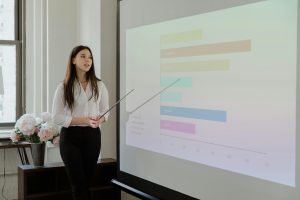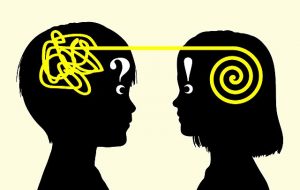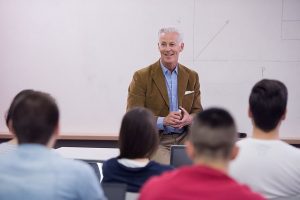Odborné články

Formative assessment and feedback for learning in higher education : a systematic review
Feedback is an integral part of education and there is a substantial body of trials exploring and confirming its effect on learning. This evidence base comes mostly from studies of compulsory school age children; there is very little evidence to support effective feedback practice at higher education, beyond the frameworks and strategies advocated by those claiming expertise in the area. This systematic review aims to address this gap. We review causal evidence from trials of feedback and formative assessment in higher education. Although the evidence base is currently limited, our results suggest that low stakes-quizzing is a particularly powerful approach and that there are benefits for forms of peer and tutor feedback, although these depend on implementation factors. There was mixed evidence for praise, grading and technology-based feedback. We organise our findings into several evidence-grounded categories and discuss the next steps for the field and evidence-informed feedback practice in universities.

Growing and Developing as a University Teacher–Variation in Meaning
This article reports the outcomes of a study, undertaken from a phenomenographic perspective, of academics' conceptions of their own growth and development as a university teacher. A range of ways of understanding teaching development emerged, representing in particular a varying focus on development experienced as an increase in: the teacher's comfort with teaching; the teacher's knowledge and skills; and learning outcomes for students. This work builds on previous studies of university teachers' conceptions of teaching, which has been shown to be related to their approaches to teaching and, thus, to student learning outcomes. Relationships between conceptions of teaching and conceptions of growing and developing as a teacher are also presented and discussed.

The power of internal feedback: exploiting natural comparison processes
Students generate internal feedback by comparing their current knowledge against some reference information. That information might be planned for by teachers – usually as comments on students’ performance – although most information is accessed by students themselves during task engagement, from their interactions with others, with resources and from memories of prior performances. Nearly all research on feedback in higher education focuses on comments as the comparison information. Ongoing and natural feedback comparisons with other information sources have been neglected: hence their potential for learning remains unexplored. To unlock the power of internal feedback, teachers need to have students turn some natural comparisons that they are making anyway, into formal and explicit comparisons and help them build the capacity to exploit their own comparison processes. To envision the possibilities, I present a new model of how students generate internal feedback as they self and co-regulate their learning, using information from multiple sources. I also synthesise two bodies of research to show how comparisons with different kinds of information, singly and in combination, can alter the nature and quality of the internal feedback that students generate. This lens of comparison changes everything. It calls for a fundamental shift in feedback practices and research.

To provide or not to provide course PowerPoint slides? The impact of instructor-provided slides upon student attendance and performance
As PowerPoint has pervaded today's college classrooms, instructors have struggled with the issue of whether or not to provide students' with copies of course PowerPoint slides (instructor-provided slides). While students report that such slides assist them academically, many instructors have expressed concerns that these slides encourage absenteeism and classroom passivity. To help assess the academic impact of instructor-provided slides, the present study examined two semesters of students' progress in a communication theory course. Across these semesters, the study charted the relationship between access/use of various types of instructor-provided slides on class attendance and exam performance. In its key findings, the study found that instructor-provided slides had no impact on class attendance and an adverse impact on course performance for students using these slides in their notetaking process.

Developing an Instrument for Teacher Feedback: Using the Rasch Model to Explore Teachers’ Development of Effective Teaching Strategies and Behaviors
This study connects descriptions of effective teaching with descriptions of teacher development to advance an initial understanding of how effective teaching may develop. The study’s main premise is that descriptions of effective teaching develop cumulatively where more basic teaching strategies and behaviors are required before teachers may advance to more complex teaching behaviors. The sample incorporates teaching behaviors observed across 878 classrooms. Teaching behaviors were observed using the International Comparative Analysis of Learning and Teaching (ICALT) observation protocol. Using Rasch analysis, the study reveals that 31 of 32 effective teaching behaviors fit cumulative ordering. The ordering also parallels descriptions of teacher development. Together the results indicate that the instrument is a potentially useful tool to describe teachers’ development of effective teaching.

Quality of teaching in higher education: reviewing teaching behaviour through classroom observations
This study examines the extent to which lecturers demonstrate effective teaching behaviour. The results of 203 observations reveal substantial differences in detected teaching behaviour. Lecturers mostly demonstrated teaching behaviour in the domains classroom climate, efficient organisation, and instruction. Teaching behaviour relating to the domains activating teaching and teaching learning strategies was observed less frequently, with almost no evidence of behaviour associated with the domain differentiation. The quality of teaching in small classes was slightly higher than that in large classes. These findings can help tailor professional learning activities to lecturers’ professional development needs.

Active Learning Increases Student Performance in Science, Engineering, and Mathematics
This article compares the effectiveness of traditional lecture-based teaching with active learning in the fields of science, technology, engineering, and mathematics (STEM) at the university level. The authors conducted a meta-analysis of 225 studies, analysing test scores and failure rates in STEM courses that used either traditional lectures or active learning. The findings indicate that average exam scores improved by approximately 6% in courses with active learning, and students in traditional lecture classes were 1.5 times more likely to fail compared to those exposed to active learning.

Creating shared spaces: developing teaching through peer supervision groups
This article examines how university teachers from different disciplines and faculties collaborate by giving feedback on each other’s teaching. This collaborative activity, termed Peer Supervision Groups (PSG), is part of a faculty development course at a Norwegian university. Conceptually the study draws on activity theoretical notions of boundary crossing and boundary objects and is empirically based on observations of a PSG over a period of six months. The article examines how collaborative interactions about teaching across communities emerge in the PSG setting and how this arrangement can be improved for the benefit of developing teaching practices in higher education.

Vysokoškolský učitel bez učitelského vzdělání: Problém, nebo výzva?
Tento text reaguje na současný celosvětový trend doceňující význam excelentní výuky na vysokých školách, kdy je výuka považována za aktivitu významem srovnatelnou s vědou a výzkumem. Zatímco pro vědeckou dráhu je v České republice mladý akademik připravován již v průběhu studia, na dráhu učitelskou zpravidla není připravován vůbec. Skrze polostrukturované hloubkové rozhovory jsme zjišťovali, jak začínající vysokoškolští učitelé vnímají svou připravenost na výuku, jak se učí vyučovat, jaké vzdělávací potřeby doprovází jejich profesi a jak by si představovali učitelské vzdělávání, které by jim umožnilo stát se kvalitnějšími učiteli. Výsledky výzkumu ukazují, že více než polovina našich participantů nedisponuje žádným učitelským vzděláním a velká část těch, kteří jsou učitelsky vzděláni, toto vzdělání považují za nedostatečné. Nejčastěji zmiňovanou vzdělávací potřebou je potřeba naučit se vést výuku interaktivním způsobem, k čemuž by měl začínajícím učitelům dopomoci například vzdělávací kurz zaměřený na pedagogiku a didaktiku, o jehož podobě panuje mezi našimi participanty jasná představa.

Why are we teaching science wrong, and how to make it right?
This article discusses the need for a shift in the way science is taught, emphasizing the effectiveness of active learning methods over traditional lectures. It highlights examples of innovative teaching approaches in undergraduate science classes, where students actively engage with course material, discuss and debate concepts, and work in teams to apply their knowledge. The article presents evidence from various studies that support the idea that active learning leads to better retention of information and improved student performance. While active learning is gaining support from both students and administrators, some faculty members remain resistant, citing concerns about time and control in the classroom. The article also addresses the need for changes in the university incentive system to encourage more focus on teaching innovation in academic careers. Overall, it underscores the importance of active learning in improving science education.

Why Peer Discussion Improves Student Performance on In-Class Concept Questions
When students answer an in-class conceptual question individually using clickers, discuss it with their neighbors, and then revote on the same question, the percentage of correct answers typically increases. This outcome could result from gains in understanding during discussion, or simply from peer influence of knowledgeable students on their neighbors. To distinguish between these alternatives in an undergraduate genetics course, we followed the above exercise with a second, similar (isomorphic) question on the same concept that students answered individually. Our results indicate that peer discussion enhances understanding, even when none of the students in a discussion group originally knows the correct answer.

Student perspectives on how different elements of constructive alignment support active learning
Constructive alignment is often promoted as a principle to enhance the quality of learning but the student perspective has often been neglected when exploring its influence on student learning. There is therefore a need to further explore how students’ experiences of the different elements of constructive alignment influence the approach to learning they adopt. Student perceptions and their approaches to learning were analysed. The results show that different elements of constructive alignment had a clear role in guiding student learning. The teaching and assessment related factors appeared to play a crucial role in guiding student learning and studying. Teaching and assessment that required students’ active involvement clearly encouraged students to adopt a deep approach to learning whereas the opposite was true for more traditionally organised courses. The intended learning outcomes did not seem to influence student learning much. The results also imply that the key is to find an optimal level of challenge to support student learning and studying. The study deepens our understanding of the importance and influence of constructively aligned teaching to students’ learning processes.

What makes an expert university teacher? A systematic review and synthesis of frameworks for teacher expertise in higher education
The article explores the qualities that define an expert university teacher by seeking consensus on core tasks essential for teacher expertise in higher education. Through a systematic review, 46 frameworks on teacher expertise were analysed, resulting in the identification of six key tasks: teaching and supporting learning, educational design, assessment and feedback, educational leadership and management, educational scholarship and research, and professional development. Additionally, three dimensions of task-related development were highlighted: improved performance, task versatility, and expanded influence. This synthesis, named the UNIversity Teacher Expertise (UNITE) model, provides a structured view of teacher expertise, supporting reflection and development for university faculty and guiding future research.
